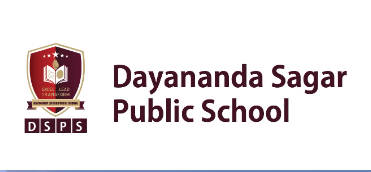
Introduction:
Dayananda Sagar Public School recognizes the transformative potential of technology in enhancing primary education. In an increasingly digitalized world, integrating technology into the primary curriculum offers a myriad of opportunities to enrich learning experiences and prepare students for the challenges of the 21st century. However, alongside these opportunities come certain challenges that need to be addressed to ensure effective and responsible use of technology in primary education. This article explores the role of technology in primary education, highlighting its opportunities and addressing the challenges it presents.
-
Enhanced Learning Experiences: Technology opens up new avenues for interactive and engaging learning experiences in primary education. Educational software, multimedia resources, and interactive applications can make learning more dynamic and accessible for young learners. Interactive whiteboards, educational games, and multimedia presentations cater to diverse learning styles, allowing students to grasp complex concepts through visual, auditory, and kinesthetic modalities. Additionally, access to online resources and virtual learning platforms facilitates self-directed learning and encourages exploration and inquiry among primary students.
-
Personalized Learning: Technology enables personalized learning experiences tailored to the individual needs and interests of primary students. Adaptive learning software and digital platforms can assess students' learning levels and preferences, providing personalized feedback and recommendations for further study. This individualized approach to learning ensures that each student receives instruction at their own pace, fostering greater engagement and academic success. Moreover, technology allows for differentiated instruction, catering to diverse learning abilities and accommodating students with special needs in inclusive classrooms.
-
Global Connectivity and Collaboration: Technology fosters global connectivity and collaboration in primary education, transcending geographical boundaries and expanding students' horizons. Online communication tools, video conferencing platforms, and collaborative projects connect primary students with peers from around the world, facilitating cultural exchange and collaboration on shared learning goals. Virtual field trips, online pen-pal programs, and collaborative projects promote cultural awareness, empathy, and global citizenship among primary students, preparing them to thrive in an interconnected world.
-
Digital Literacy and 21st-Century Skills: Integrating technology into primary education equips students with essential digital literacy skills and 21st-century competencies necessary for success in the digital age. From basic computer skills to critical thinking, problem-solving, and digital citizenship, technology-enhanced learning experiences cultivate a range of skills essential for navigating an increasingly complex and interconnected world. Primary students learn to responsibly use technology, evaluate online information, and communicate effectively in digital environments, empowering them to become informed and ethical digital citizens.
Challenges:
Alongside the opportunities, integrating technology into primary education presents certain challenges that need to be addressed. These include concerns about screen time and digital overload, ensuring equitable access to technology for all students, addressing cybersecurity and online safety concerns, and providing adequate training and support for teachers to effectively integrate technology into their instructional practices.
Conclusion:
In conclusion, technology holds immense potential to enhance primary education by providing interactive, personalized, and globally connected learning experiences. Dayananda Sagar Public School is committed to harnessing the power of technology to enrich the educational journey of primary students, preparing them to thrive in a rapidly evolving digital landscape. By leveraging technology responsibly and addressing the associated challenges, primary education can be transformed to empower students with the skills and competencies they need to succeed in the 21st century and beyond.

No comments yet